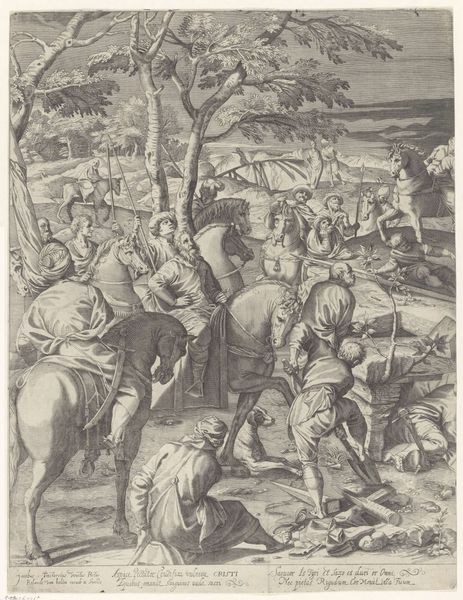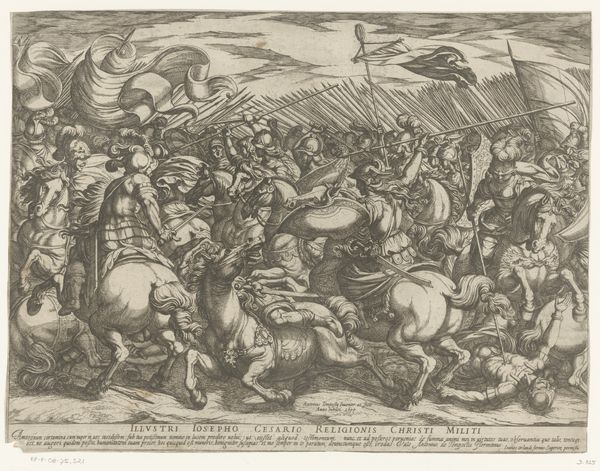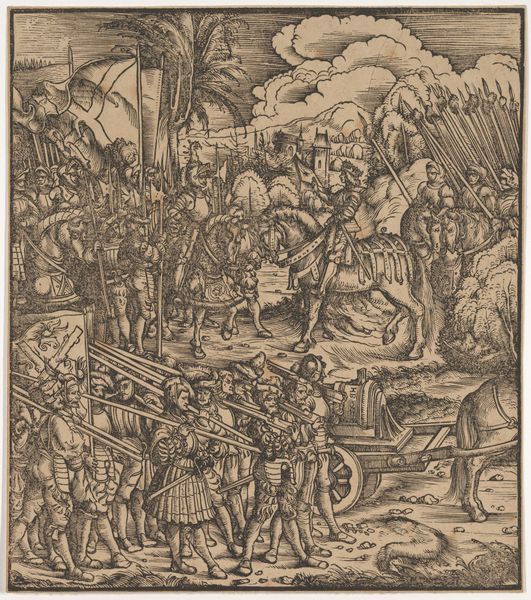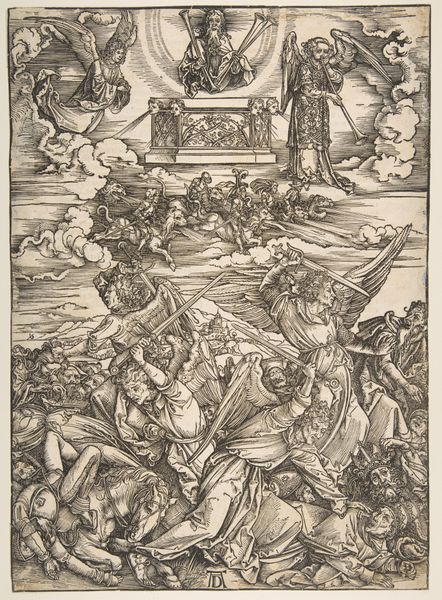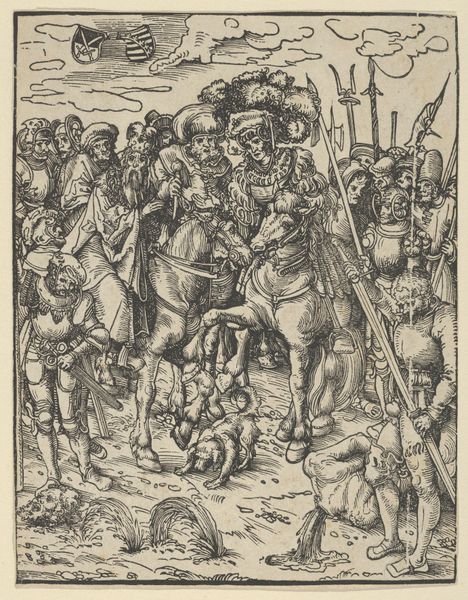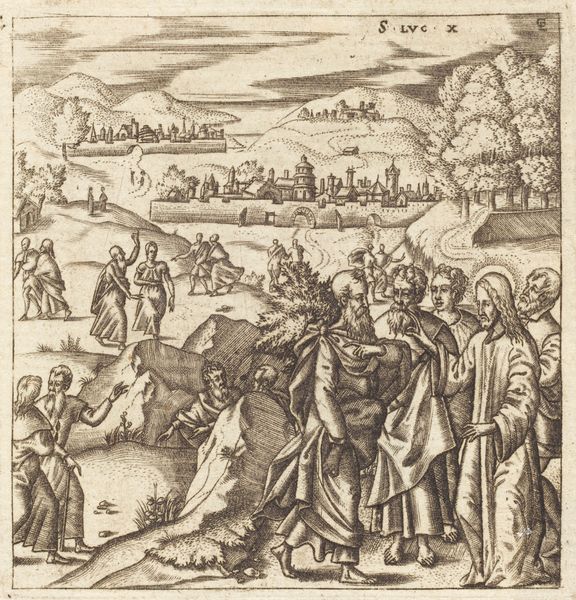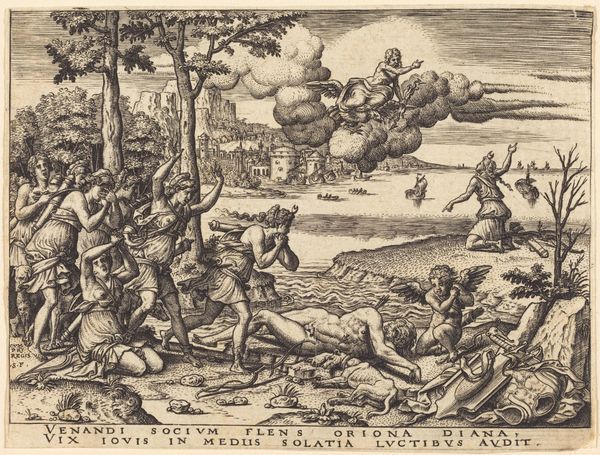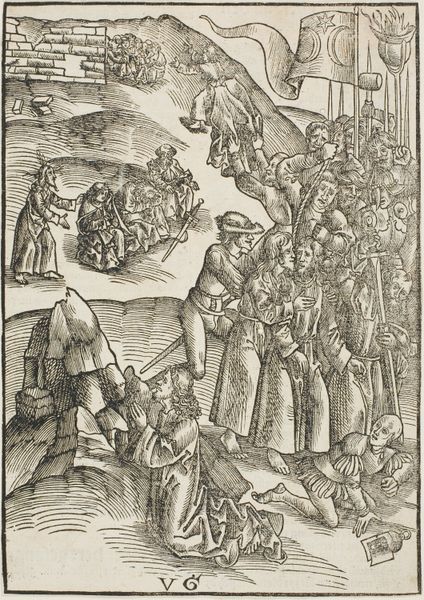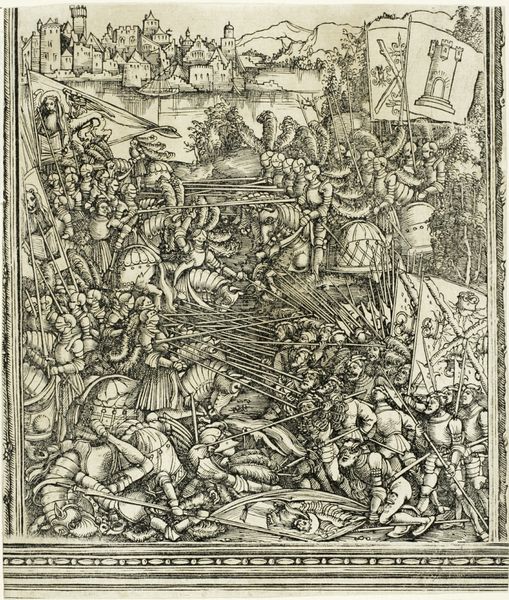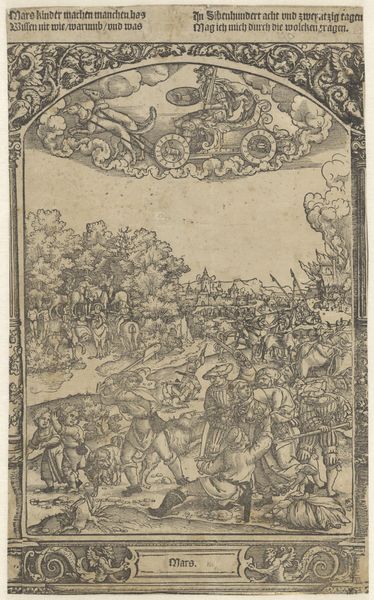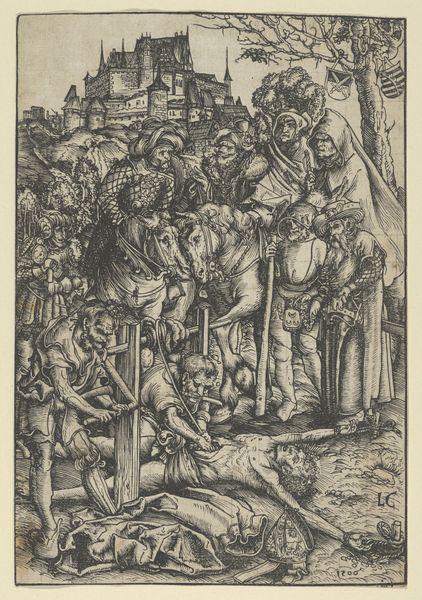
drawing, print, ink, engraving
#
drawing
#
narrative-art
#
pen drawing
# print
#
landscape
#
figuration
#
11_renaissance
#
ink
#
history-painting
#
northern-renaissance
#
engraving
Copyright: National Gallery of Art: CC0 1.0
Curator: Look at this captivating print, "The Annunciation to the Shepherds," by Léonard Gaultier, dating back to around 1576-1580. It’s a compelling narrative scene rendered with exquisite detail using engraving techniques. Editor: It’s quite striking, though unsettling. The divine light and angelic figure seem to invade a space of earthly vulnerability, almost assaulting the unsuspecting shepherds. Curator: Yes, the contrast is powerful. Gaultier masterfully uses line to define form and create a sense of depth within the compact composition. The postures, the layering of figures... note how it all contributes to the story's unfolding. Editor: Absolutely, but let’s consider who those shepherds are, right? They were among society's most marginalized and vulnerable populations. This image reinforces a narrative of divine intervention within structures of profound inequality and highlights a sort of preferential treatment. Curator: Precisely! The artistic choices create dramatic tension. Look at the treatment of light—those radiant beams puncturing the otherwise pastoral scene—drawing our eye upwards to the source of the Annunciation, emphasizing hierarchy and power. Editor: While technically skillful, the representation is deeply problematic, even classist. How does this depiction of divinely ordained privilege impact contemporary viewers? What responsibilities do artists have when dealing with social disparities in religious narratives? Curator: These are crucial questions. In studying this work, we see both Gaultier's skill and the complexities of 16th-century social attitudes represented. Editor: It reminds us that artworks are not just beautiful objects, but complex historical artifacts loaded with ideological baggage, requiring constant reassessment in light of modern ethics. Curator: I think you are absolutely right. This particular work challenges us to reconcile our appreciation of artistic form with our understanding of social content. Editor: Yes, and these uncomfortable collisions often yield the most productive discussions and fresh perspectives. Thank you for that opportunity!
Comments
No comments
Be the first to comment and join the conversation on the ultimate creative platform.
